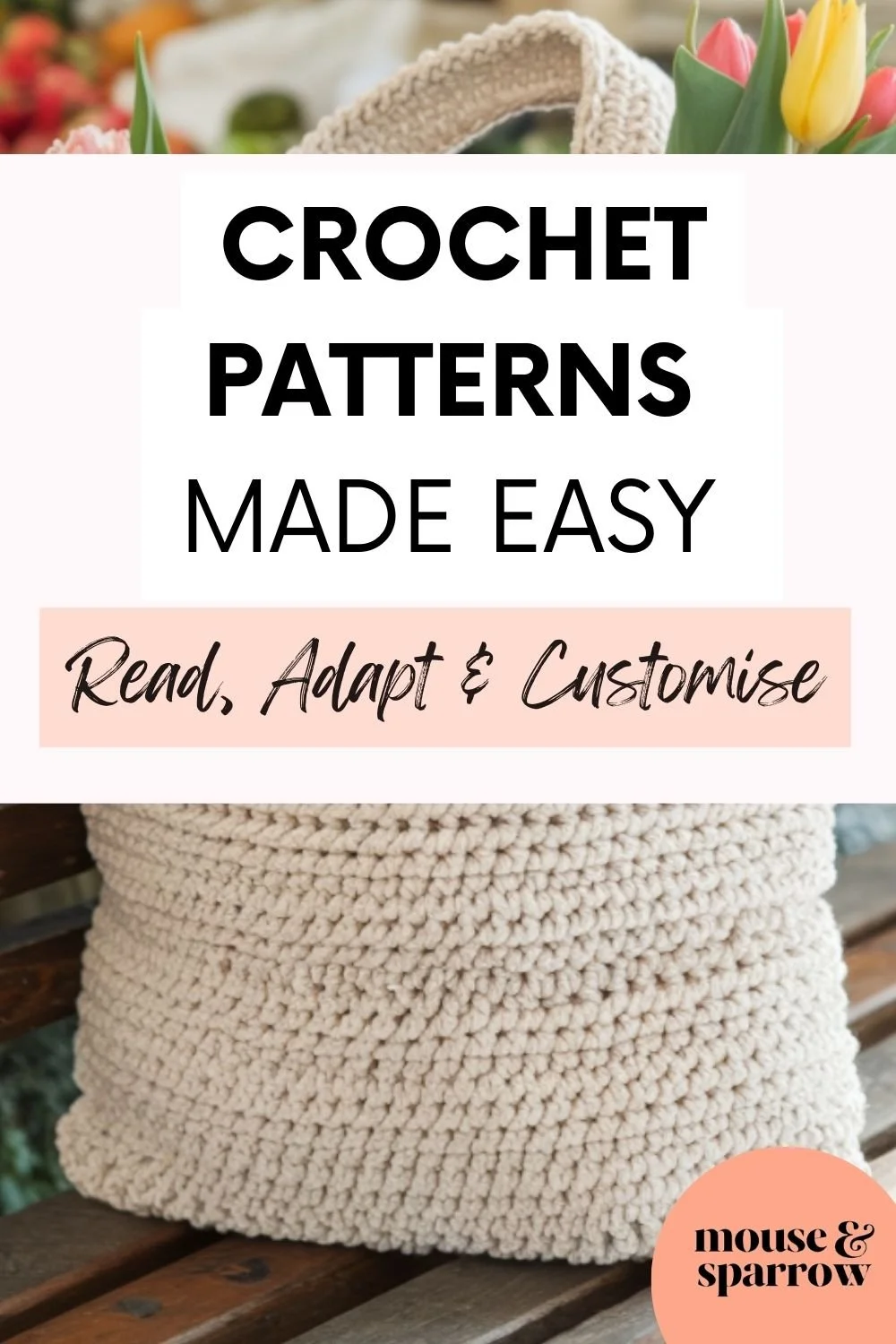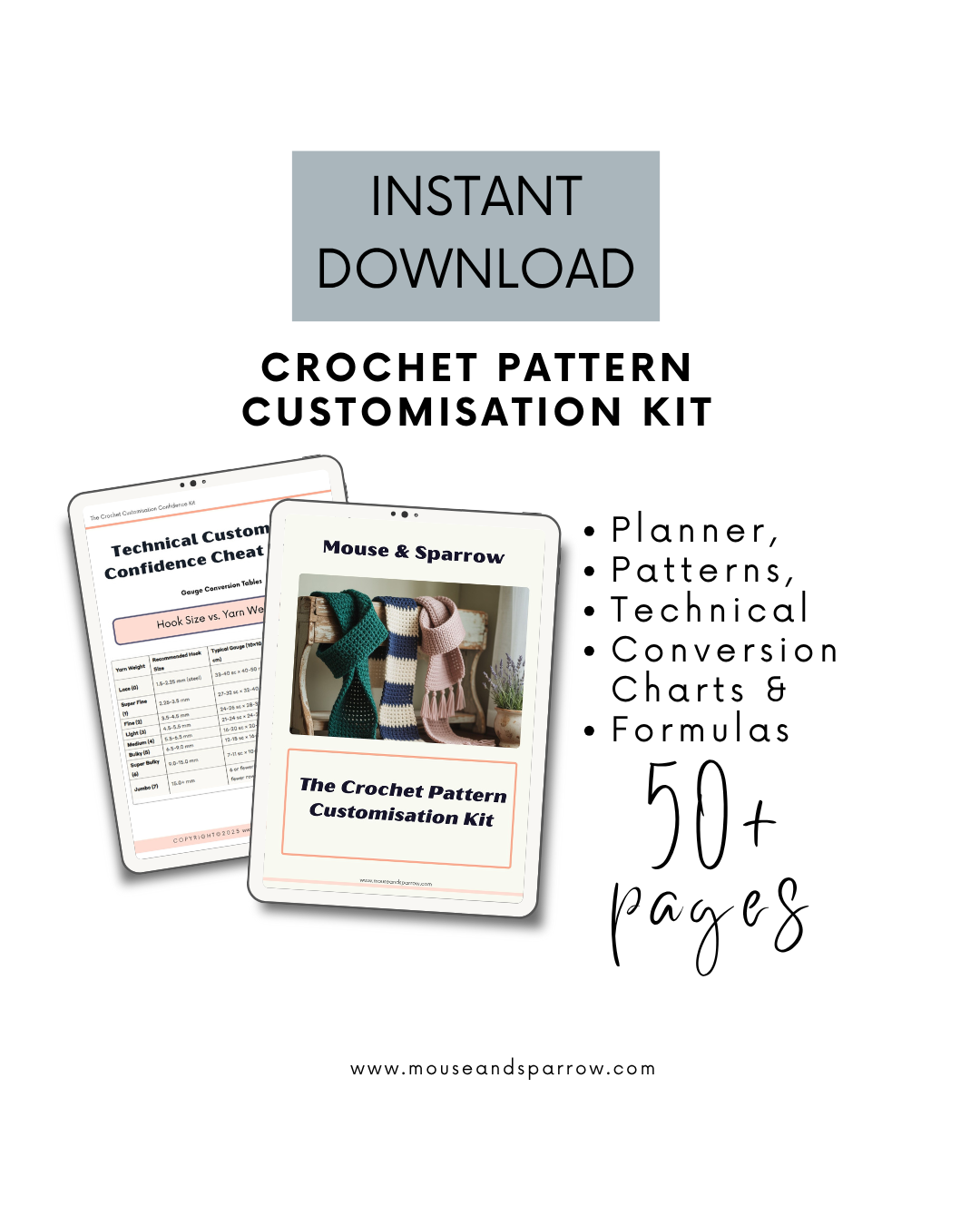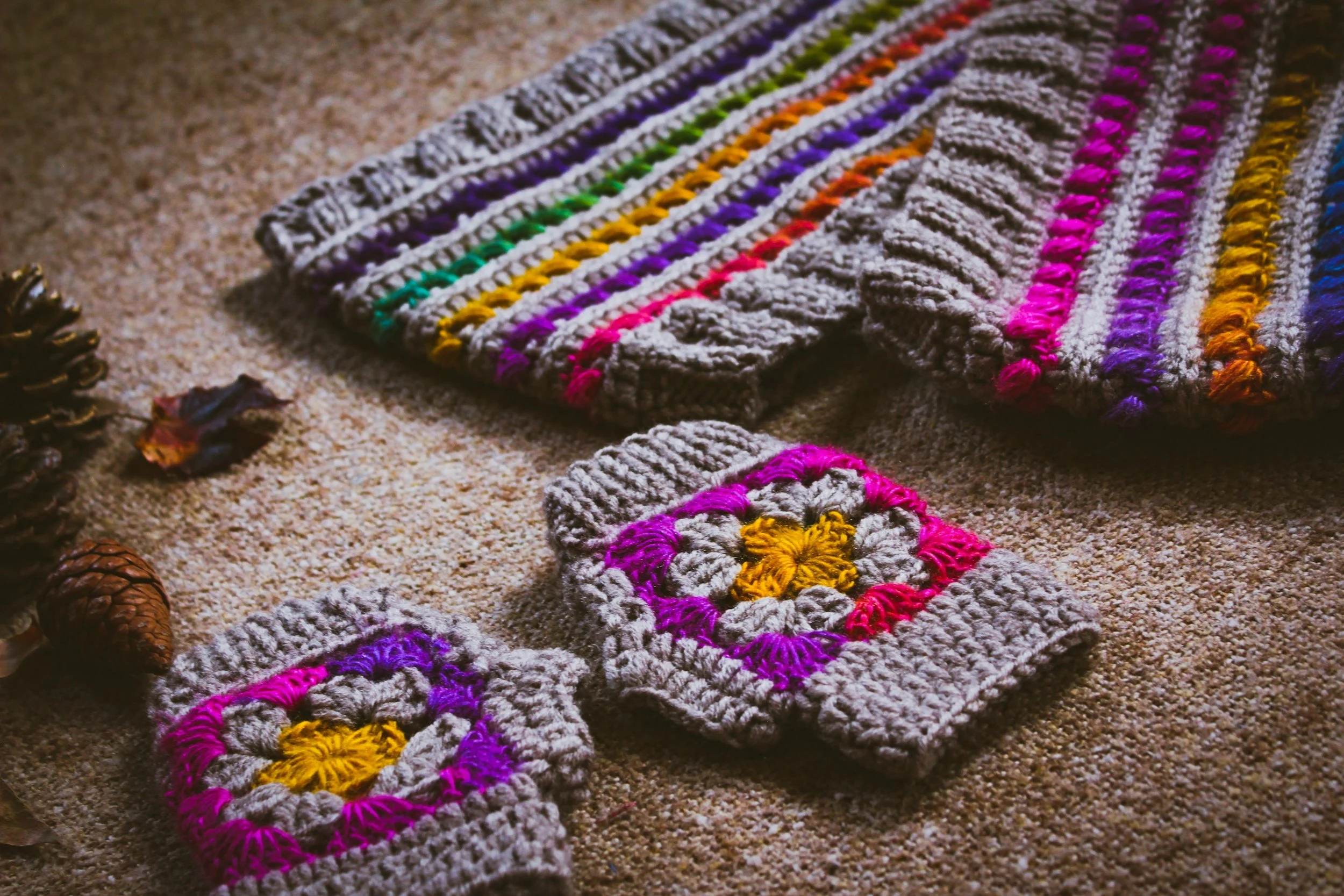Crochet Patterns Made Easy: Read, Adapt, and Customise
This post may contain affiliate links.
Crochet patterns aren’t strict instructions carved in stone. Think of them as roadmaps—you can follow the path exactly, or you can take a few creative detours and still arrive at something beautiful.
The best part? You don’t need to be an expert to make a pattern your own. With just a few tweaks, you can adjust crochet patterns to suit your style, your colors, and your creativity—without the overwhelm.
This guide will show you how to read, adapt, and customize crochet patterns with confidence.
Ready to pick up your hook and make every project uniquely yours?
📌 Pin this post to come back to it anytime.
Why Most Crochet Patterns Look the Same (and How to Break the Mold)
Most crochet patterns are written to be followed step by step. That’s the whole point, right?
You pick up a pattern, grab your yarn, and—voilà—something lovely grows from your hook.
Patterns are designed to be replicable, not necessarily personal.
It’s like using a recipe from a cookbook. You can make the dish exactly as written, and it’ll be fine—delicious, even.
But maybe you want more spice, or less sauce, or that extra sprinkle of herbs that makes it yours.
Crochet works the same way.
Many people follow patterns exactly because it feels safer. If you’re worried about “messing it up,” it makes sense to cling to the instructions. I believe that’s why so many crocheters hesitate to adjust crochet patterns—they don’t want to waste time or yarn.
But small tweaks don’t break a pattern. They often unlock it.
I’ve seen plenty of guides on customizing—some are broad lists, some dive too deep into stitch math, and some quit just as you’re getting inspired. What’s missing is a clear, hands-on approach you can use right away. Here are three simple tricks to make any crochet pattern uniquely yours.
Pattern Customization Trick #1:
How to Adjust Crochet Patterns with Simple Stitch Swaps
Think of stitches as the language of crochet.
Patterns are made up of stitches—single crochet, double crochet, trebles, clusters, and more—and the way you combine them can completely change the look, texture, and feel of your project.
Here’s a simple example:
Imagine you’ve got a blanket pattern written entirely in double crochet.
But what if you want something more textured? You could swap every fourth row for a row of puff stitches.
Suddenly, the blanket has rhythm. It catches the light differently. It feels bolder under your fingertips.
That’s the beauty of stitch swaps. You don’t need to redesign the pattern; you just slip in a different texture. The overall shape stays intact, but the vibe is transformed.
One thing I believe is counterintuitive: sometimes using fewer fancy stitches creates more impact.
We tend to think “the more complex, the better.”
But a single line of bobbles running through an otherwise simple scarf can be more striking than an all-over lace pattern. It’s the contrast that makes it sing.
Start small.
Replace a border stitch. Add a row of shells in the middle of a plain section. You’ll see how forgiving crochet really is.
The worst that happens? You frog a row or two.
The best? You discover a combination no one else has thought of.
The practical side.
Different stitches affect drape and size. A blanket worked in moss stitch, for example, will come out denser and smaller than the same blanket worked in double crochet. That’s not a mistake—it’s an opportunity. When you know how stitch swaps shift fabric, you can use that knowledge to fine-tune your projects to fit exactly the way you want.
That’s why I believe swatching is non-negotiable when you’re experimenting. It’s like sketching before painting. Grab a scrap of yarn and test your new stitch idea before you commit. Ten minutes with a swatch can save you hours of frustration later.
And when you land on a combo you love, jot it down.
➡️ The Complete Crochet Stitch Dictionary is a goldmine here—when you’ve got hundreds of stitch options at your fingertips, swapping becomes second nature. Pair that with a set of ergonomic crochet hooks for comfort during long experiments, and you’re ready to play without hand strain.
➡️ Crochet Pattern Customisation Kit inside the kit, you’ll find stitch reference cards and swatch guides—exactly the kind of tools that make experimenting feel easy instead of overwhelming.
Pattern Customization Trick #2:
Crochet Pattern Customization Through Color and Yarn Choices
Colour is the quickest way to leave your mark on a crochet pattern.
Picture this:
A simple granny square worked in three shades of grey. It looks modern, sleek, almost industrial. Now take the same square and crochet it in jewel tones—emerald, sapphire, ruby. Suddenly it feels rich, regal, dramatic. Same pattern. Entirely different story.
I believe colour is emotional. It’s not just about what looks pretty—it’s about how it makes you feel when you hold it, wear it, or gift it. That’s why playing with color placement is such a game changer. You don’t have to invent a brand-new design to get something unique. You just move the colour around.
Try this:
In a striped blanket, swap out the planned colour order for something unexpected. Or in a cardigan, work the ribbing in a contrast shade so it pops against the body. These aren’t massive structural changes. They’re brushstrokes.
And here’s a tip that’s often overlooked: yarn texture can act like color.
Mix a strand of mohair with your regular acrylic and suddenly the fabric has a halo, a soft blur around the stitches.
Hold two colors together and watch them blend like watercolor.
Even metallic threads, used sparingly, can make a project feel festive without overwhelming it.
What surprises a lot of people is how effective restraint can be with colour. You don’t need a rainbow to make something unique. One stripe in a bold, unexpected shade can change the whole tone of a piece. Think of it like eyeliner on a face—it’s a small detail, but it transforms the look.
➡️ This is the perfect excuse to try a yarn box set bundle (Amazon has plenty). They let you test palettes without committing to full skeins. Gradient cakes and variegated yarns are another fun option—you get colour shifts without weaving in endless ends. For extra flair, grab a ball of metallic thread or mohair blend and hold it double with your base yarn.
Transform from pattern-follower to confident creative with the complete system for customising any crochet pattern!
The Crochet Pattern Customization Kit includes:
📋 Complete Technical Guide - Conversion charts, sizing formulas, and troubleshooting guides
📱 4 Practice Patterns
📝 Tracking Tools - Document your successes for future projects
All for just $17—a tiny investment for endless creative possibilities.
Pattern Customization Trick #3:
Changing Shape and Proportion in Crochet Patterns Without Rewriting Them
Here’s where things get exciting. Shapes and proportions give structure to a crochet pattern. When you tweak them, you’re tailoring the project to fit your body, your space, your life.
Let’s take sleeves as an example.
Most sweater patterns will give you a standard sleeve length. But maybe you prefer a bracelet sleeve that shows off your bangles, or an extra-long sleeve you can bunch up for coziness. Adjusting crochet patterns for sleeve length is as simple as adding or subtracting a few rows before the cuff. It’s not complicated math—it’s confidence.
The same goes for hemlines.
Want your cardigan to skim your hips instead of hitting your waist?
Add another repeat of the stitch pattern. Want your blanket to be a square instead of a rectangle? Adjust the row count.
One thing people often miss is that tiny proportion changes can completely alter a project’s personality.
A scarf made just a little wider suddenly feels like a luxurious wrap. A bag with slightly longer handles becomes a chic tote instead of a casual handbag.
Of course, shape tweaks can affect yarn usage.
Adding length or width means you’ll need more yarn, so keep a little buffer in your stash. But don’t let that scare you off. Planning for an extra skein or two is worth the chance to make something that feels custom-made.
There’s also the possibility of adding design flourishes—slits at the sides of a tunic, an asymmetrical edge on a shawl, a high-low hem on a sweater. These aren’t just aesthetic choices; they can make garments more wearable. A slit, for example, allows ease of movement in a fitted dress. That’s functional beauty.
Simplifying a shape can sometimes make it look more sophisticated. Crocheters often think “more shaping equals more style.” But a boxy, oversized cardigan, made intentionally, can look modern and chic. Minimalism has its place in crochet just as much as lace or frill does.
The Secret to Successful Crochet Pattern Customization: Swatching and Notes
Every custom idea begins with an experiment. And experiments need a record. Swatching and note-taking might sound boring, but they’re the unsung heroes of successful customization.
A swatch is more than a gauge check. It’s a little playground.
Want to see how puff stitches look against a double crochet background? Swatch it.
Curious if a color combo is too loud? Swatch it.
Wondering whether a high-low hem will drape nicely? Swatch it.
Those tiny squares of fabric tell you everything you need to know before you commit yards of yarn and hours of your time.
And then there are notes.
I can’t tell you how many times I’ve made a brilliant tweak in the moment and forgotten exactly how I did it.
A quick scribble in a notebook saves you from that frustration. Write down the stitch counts you adjusted, the rows you added, the colour order you switched. Future you will be grateful.
Your swatches and notes become a personal library.
Over time, they tell the story of your style. You’ll see patterns—certain textures you lean toward, colour schemes you return to, proportions that just feel right. That library is your customization kit, built stitch by stitch, note by note.
➡️ A crochet project notebook is a must-have here. Pair it with swatch blocking boards to keep your samples neat, and you’ll build your own personal design library.
Your Crochet, Your Story
Every stitch you make is more than yarn looping through a hook—it’s a piece of your personality finding its way into the fabric. Patterns are a guide, but they’re not the final word. You are. With a few thoughtful tweaks—whether it’s a new stitch, a splash of color, or a finishing touch that screams you—you can transform any crochet pattern into something unforgettable.
So don’t hold back. Let your creativity run wild. Trust your instincts. And most of all, have fun with it. After all, the most beautiful thing about crochet isn’t the pattern you follow—it’s the story you tell with every loop and knot.
What Next?
📌 Pin this post: Pin this post to your favourite Pinterest board so you’ll always have a quick spark of inspiration ready whenever you need it.
💬 Join the conversation: I’d love to hear from you—are you already working on a granny square project, or is this your sign to finally start one? Drop your questions, ideas, or favourite granny square tips in the comments below.
✨ Grab the free classic granny square pattern: Want to follow along step by step? Download your free granny square pattern here and start stitching today. It’s beginner-friendly, easy to follow, and perfect for your first project.
🌟 Ready to level up? When you’re hooked (and you will be!), check out the Crochet Pattern Customization Kit. It’s packed with design tips, stitch swaps, and cheat sheets to help you make every project truly your own. Find out more here.
🌟Coming soon — the Crochet Kit: I’m putting together a beginner-friendly crochet kit with everything you need in one box: yarn, hooks, and a step-by-step guide. Want first dibs when it launches? Join the waitlist here.
🤗 Share the love: Know someone who’s been saying they want to learn crochet? Send them this post or share it on your socials—you might just give them the little push they’ve been waiting for.






Struggling with wonky edges in your crochet? In this tutorial, I’ll show you the easy stacked-stitch method I use to keep my edges perfectly straight — no gaps, no leaning, no guesswork. It’s a beginner-friendly fix that will instantly make your projects look cleaner and more professional.